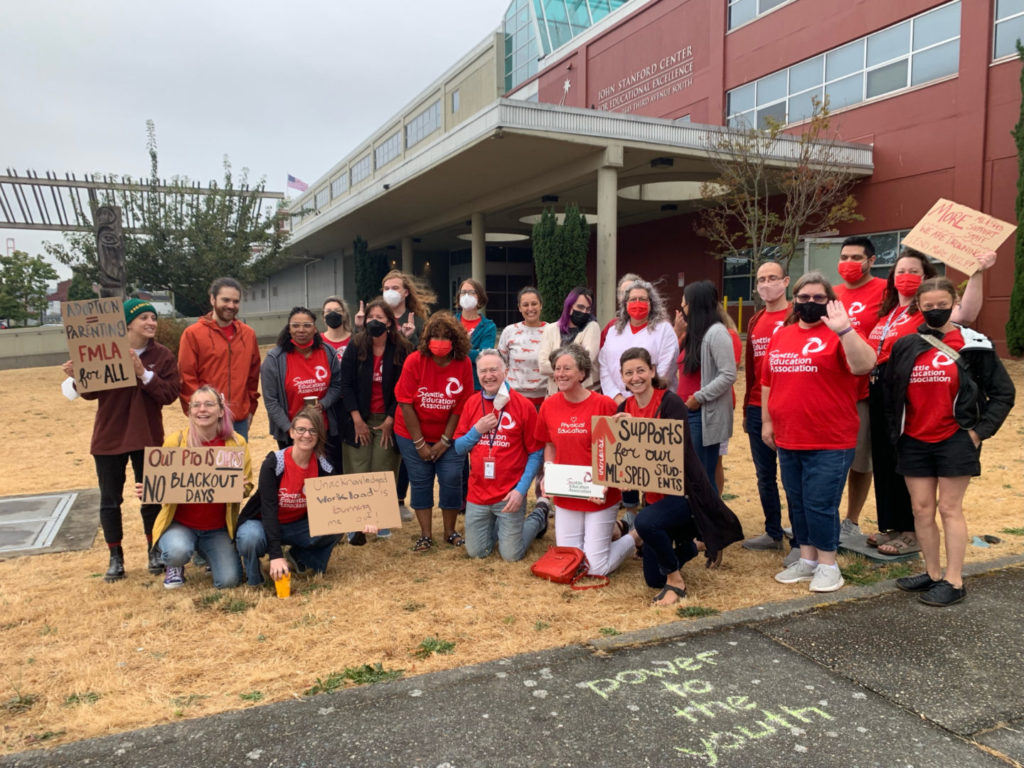Seattle schools, teachers union negotiating contract with deadline approaching
(The Center Square) – With two days left before the current contract expires, Seattle Public Schools and the Seattle Education Association have yet to establish a new deal.
The teachers union…

(The Center Square) – With two days left before the current contract expires, Seattle Public Schools and the Seattle Education Association have yet to establish a new deal.
The teachers union members sent nearly a thousand emails to the Seattle School Board last week calling for a contract that provides adequate support for faculty and students, according to SEA.
The district and SEA have differences on three main areas: “ensuring supports [and no cuts] for special education and multilingual education; creating accountability around reasonable workload, caseloads and class sizes; [and] increasing pay, particularly for the lowest paid staff,” according to SEA’s update on its website.
In a virtual Q and A on Facebook last week, SEA bargaining leaders discussed aspects of the union’s wants and needs in a new contract with SPS. The most discussed topic was special education.
“SPS is looking for us to give it full control to do whatever it wants with staffing and if the past is any indicator, that usually means just adding the [special education] students to general education classrooms without any additional supports,” SEA said in an update.
The union said that by adding students in special education classes to general education classrooms, it increases workloads for teachers, reduces resources that students need and ultimately sets everyone involved up for failure.
The district’s priorities involving special education include establishing set teacher to student ratios. SPS’s proposal for students who have mild to moderate differences in their instructional needs for specific academic needs and social skills includes qualification in any one of 13 federally mandated disability categories. Students who do qualify for any of the disability categories may be provided services in any setting as specified in the individualized education plan.
The proposal states that in schools with a full continuum of services, resource services will be staffed at a 22:1 ratio. However, SEA’s counter proposal would only have resource services staffed for special needs students at an 18:1:1 ratio regardless if schools offer full or partial continuum of services.
The union’s counter proposal does not include any instance where special education teachers or multilingual classrooms would have a class ratio of 20:1 or higher.
About 20 miles south of Seattle, the City of Kent’s school district is facing a similar teacher contract crisis. The Kent Education Association has gone on strike, delaying the start of the school year for over 25,000 students. (The extra 1 is a classroom assistant.)
In a Facebook post last week, SEA announced their solidarity with the Kent teachers union, saying “Kent is facing many of the same issues we’re facing – impossible workloads, lack of student supports and low pay.”
SPS and SEA’s current contract expires on Aug. 31. If a deal is not agreed upon within the next two days, Washington State’s largest school district could be facing a similar situation as Kent’s school district.
SPS told The Center Square it has had good conversations with the union this past weekend that could prevent a school delay.
“We have had a productive Saturday and Sunday with SEA; we are optimistic that an agreement will be reached and school will begin on time,” SPS said in an email to The Center Square. “The SPS proposals that have been put forward to SEA align with the district’s instructional philosophy to puts students first . . . and provide educators and staff with generous compensation.”
SEA did not respond to a request for comment.



